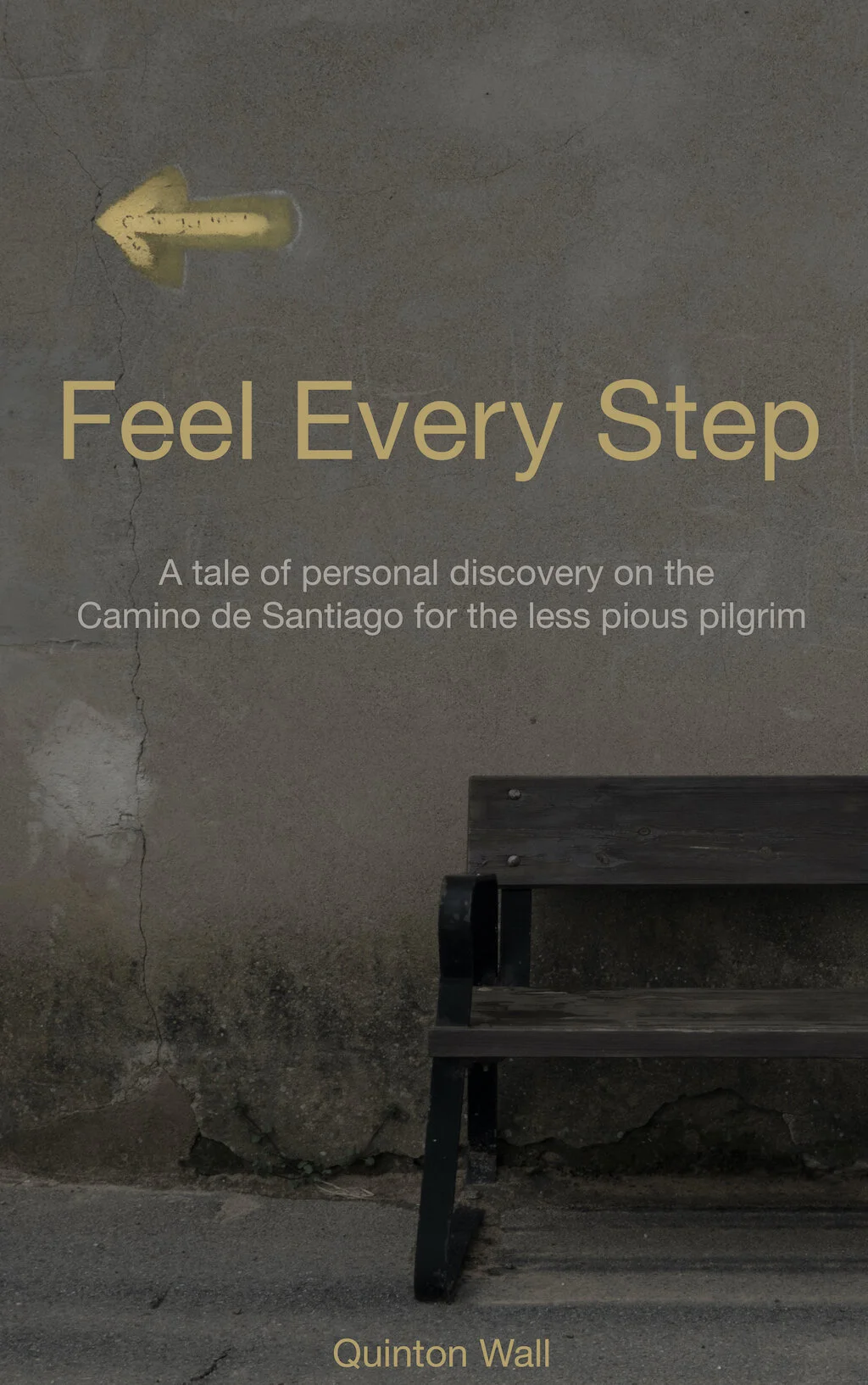What do you when your dreams come true? Like many people who are drawn to walk the Camino de Santiago, I was looking for some meaning in my life and, as crazy as it sounds, how to feel again. For 27 days I walked the Camino Francis from St Jean Pied de Port. Along my journey I discovered something about myself, and perhaps more importantly, about the Way itself.
Not sure if the book is for you? Read the first two chapters for free.
Chapter 1
What do you do when five years of daydreaming is over? Like many of the people whom I met during the 27 days I was on the Camino de Santiago, The Way had been calling me, slowly but surely creeping into every waking hour. I was drawn to it. I couldn’t not walk it. I had to. And now it is over, what do I do?
I’m sitting at a cafe in the historic city of Santiago de Compostela, home of the cathedral to which I walked every step for 800km from St. Jean Pied de Port. It looms over my shoulder, cerulean skies above welcoming a constant flood of pilgrims into the grand plaza. They’ve been drawn to this place, this journey, also. Do they know why?
I arrived in Santiago de Compostela five days ago. As soon as I sat in the plaza and gazed upon the spires of the cathedral, I knew this was where I needed to stop. Many pilgrims continue to the coast, to Finisterre, another 90km west, but I no longer felt the draw. Like the scaffolding that wrapped the spire of the cathedral in a spider’s web of steel and construction, the city embraced me equally as tight, its grip not ready to let me go.
Upon arrival, I sat in the Plaza de Obradoiro, took my shoes and socks off, and stretched out my weary legs. I took a deep breath, the first real pause I can remember taking for years, perhaps ever. I watched other pilgrims arrive, embracing fellow travelers, heartfelt congratulations shared without restraint. We’d done it. And we had the physical scars and mental healing to prove it.
What did I learn during my Camino? I had lost count of how many times during my walk I had been asked what my motivations were. Most of the time, I kind of shrugged off the answer, offering a vague “I just needed a break to think about things.” How could I explain that I wanted to undertake this journey as a way to reconnect with people, to break down the walls of solitude I had built up brick by brick for more years than I can remember? I’ve always been happy alone, but over the past few years, those bricks had almost walled me in. I felt separate from the world, unable to connect with it. It was no longer my world. It was foreign. Uncomfortable.
I chose to walk the Camino as a way to learn to feel again. As crazy as that sounds, it’s true. I wanted to experience real, scratching-at-your-soul emotions. So, on March 28th, 2016, after a brief car ride from Biarritz on the northwest coast of France, I stepped onto the ancient stone road of St. Jean Pied de Port and saw my first flecha amarilla, one of the yellow arrows guiding pilgrims west. I smiled with a sense of anticipation. I was here. Finally. But would it be what I expected?
Chapter 2
I arrived in town at 18:30 in the evening. My flight from Paris had been delayed over an hour so I had worried that my driver from Biarritz would not wait and I would be forced to wait another day before starting my Camino. I’m always worried about one thing or another these days. He did wait so on reaching St. Jean, I got out of the car and immediately climbed the steep path to the old fortress, once used to defend the path through the Pyrenees. Tomorrow I would take the same path to cross the mountains and enter Spain.
I sat atop the fortress watching the sun dip low. The golden hue of evening spread out below me, pink buds on trees eager for Spring’s embrace. This is what it is like when your dream comes true. I took a few photos before lifting my pack onto my back. I had things to do. It was time to get to work.
My first task was to find a place to sleep for the night. Over the years my insatiable wanderlust has taken me all over the world — from the mountains of the Himalayas to the largest caves in the world, deep underground. During these travels, I’ve met many different types of people. Everyone travels differently. Some like to plan everything, with detailed research on where to eat and what to do. I’m not that sort of traveler. Not knowing where I am sleeping at night is part of the adventure.
I checked into the local municipal albergue, a simple stone block of a building. I paid my €5 and was shown to the dorm and my bed. I dumped my pack on the lower bunk and spread out my sleeping bag. The room was already half full with fellow pilgrims adjusting to our new life. Goodbye privacy, hello community. I smiled as I left the albergue in search of food and to pick up my credential – a special passport identifying me as a pilgrim – from the pilgrim office. This was going to be fun.
“No, it is closed. If you go that way and need to be rescued, it will cost you €4000,” said the friendly but direct volunteer at the pilgrim office, stamping my credential with a thud, when I asked whether the Napoleon route, the high route that crosses the Pyrenees, was open for the season. It was still too early in the season, and snow was a problem.
“Do not go that way,” she said again, pushing my credential back with a stare that said she knew exactly what I was thinking. You’re not the first pilgrim I’ve met with trouble in your eyes.
I smiled. “Si. No problemo.” I paid €2 for the credential and the friendly advice I was planning on ignoring. She knew it. So did I.
I was really doing this, I thought as I made my way back to the albergue. I’m walking the Camino!


